A lightweight non-stick pan is a highly popular choice these days thanks to its easy maintenance properties. Your food won’t stick to its surface during cooking, which means less washing for you. The problem is that this cookware loses some of its features over time, and you can notice scratches over the surface. As a result, you will face sticking food at one moment.
All those are the primary reasons for seasoning this type of skillet. This process will prolong its lifespan, improve the food taste, and decrease fat in your diet. So, it is crucial to determine the best way how to season a non-stick pan correctly. Keep in mind that seasoning is a quick and inexpensive process that can save you from buying new cookware too often.
This article will cover
- What Is a Non-Stick Pan?
- How Often to Season Your Pan?
- How to Season a Nonstick Pan for the First Time?
- Seasoning in the Oven.
- Seasoning Pan on the Stovetop.
- Spraying the Surface of the Pan.
- The Best Oil Options for Seasoning.
- Regular Maintenance of a Non-Stick Pan.
What Is a Non-Stick Pan?
In the early stages of their development, the surface of a non-stick pan could quickly become distorted, often within several months of first use. That made this type of cookware a cheap and inferior option. Luckily, the protective coating has evolved over the years.
Nowadays, we have durable and sturdy models, thanks to the new technologies. They are made from high-quality metals, which allows you to use your pan under both high and low heat conditions.
Plus, the proper seasoning will make your non-stick pan more durable, flexible, and long-lasting. At the same time, its surface will become slippery and won’t allow sticking the food scraps at the surface.
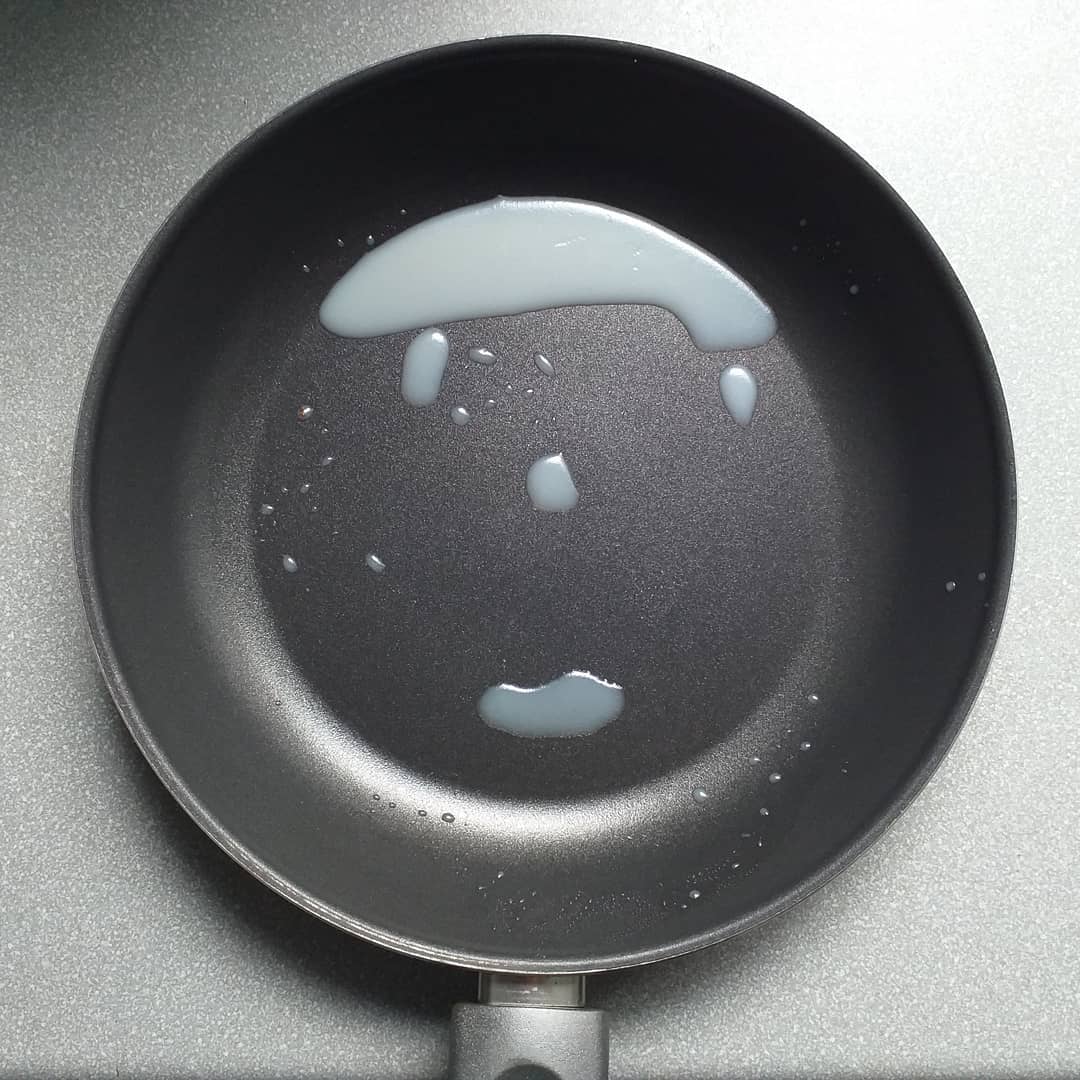
You can choose among three different non-stick pans, including:
- Teflon model coated with PTFE (poly-tetra-fluoroethylene)
- Non-stick pan without Teflon
- Ceramic pan coated with a silica-based gel
How Often to Season Your Pan?
The first seasoning is crucial for cast iron pan since this layer of oil protects the surface from rusting. When you have a carbon steel pan, you need to finish this initial seasoning to make the pan surface slick. Finally, the new aluminum and stainless-steel cookware seasoning will prevent food from sticking over the pan surface.
On the other hand, there is no need to season your new non-stick cookware immediately after purchasing. It will be enough to do that once you notice that it has lost its performance and food starts to stick over the bottom.
The primary rule is that the more times you repeat the seasoning process, the longer the effect of seasoning will be visible. However, it will depend on your needs and how often you use your skillet.
Some manufacturers recommend seasoning their pans at least six to seven times, depending on the type you have. Basically, you should do that as soon as your skillet loses its non-stick properties.
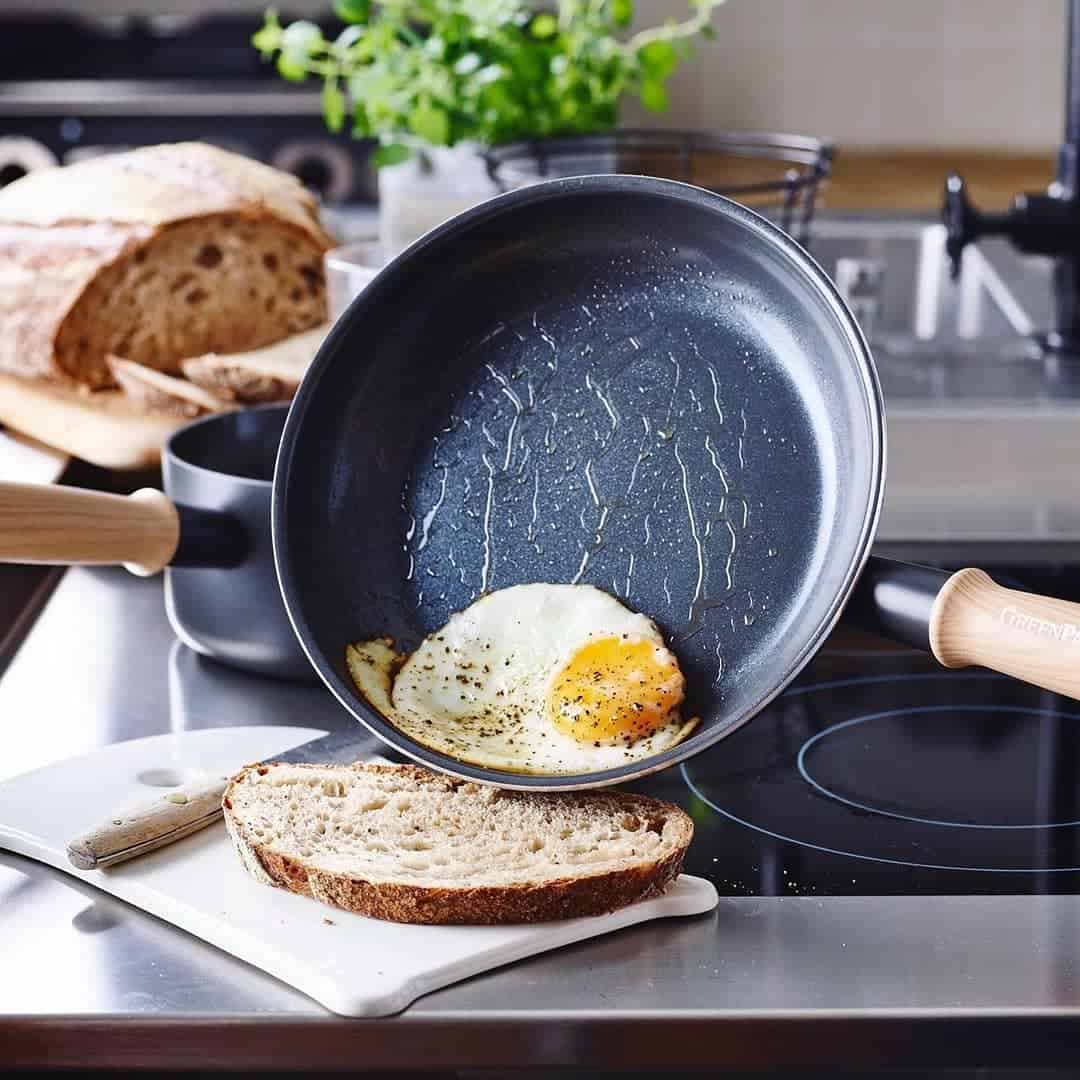
There are a few reasons why regular seasoning is highly beneficial:
- Improving pan surface – Seasoning will fill the small pores on the pan surface and repair tiny inconsistencies in the finish.
- Prolonging the pan lifespan – Regular seasoning will extend the pan’s life, which means you won’t have to buy another one for a long time.
- Prevention – When your pan is adequately seasoned, you won’t have an issue with sticking the foods. That protective layer will keep the pan surface from oxidation, damage, and rust.
If you miss seasoning your cookware regularly, your non-stick pan’s performance may diminish, causing food to stick to the surface.
How to Season a Nonstick Pan for the First Time?
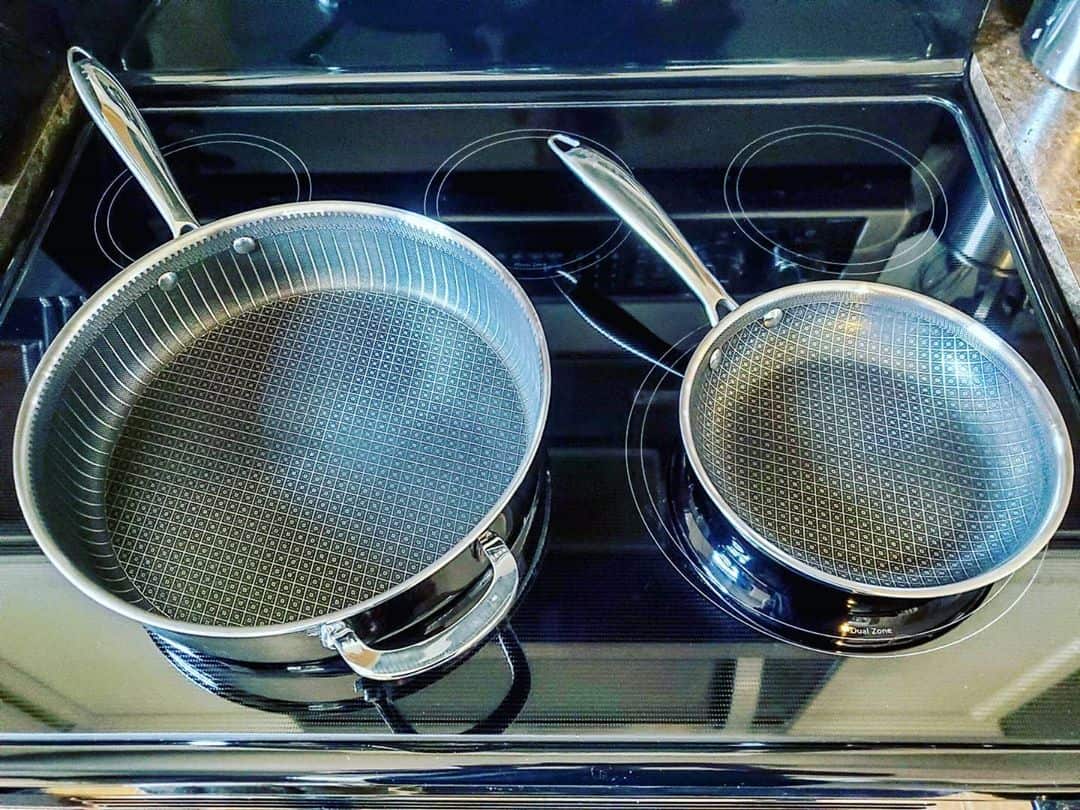
Keep in mind that the way of seasoning a non-stick pan will vary depending on the manufacturer. Therefore, you should comply strictly with the recommended guideline.
A high-quality coating will improve the performance and efficiency of your skillet. You should repeat the process to extends its lifespan. It is recommended to do it every six months. However, you need to season your pan every four months if you wash it in the dishwasher.
Some people believe that there is no need to season a non-stick pan since it already has a coat. However, that coating will be lost over time, so you should protect your skillet and the food you want to prepare.
Step 1. Cleaning a non-stick pan
The first thing to do before the process of seasoning is to clean your pan with a mix of baking soda, vinegar, and water to remove existing stains and food scraps.
Step 2. Make a mix
Mix half cup white vinegar, one cup water, and two tablespoons baking soda and pour it into your pan. Place it on the stovetop over medium heat and let it boil. You can take the pan off the heat after about ten minutes.
Step 3. Wash the pan
Pour out the mixture and wash cookware thoroughly with dish soap and a sponge.
Step 4. Dry the pan
Dry the pan surface with a soft dry cloth or paper towel. That way, you will prevent the oil from sticking to its bottom.
Seasoning in the Oven
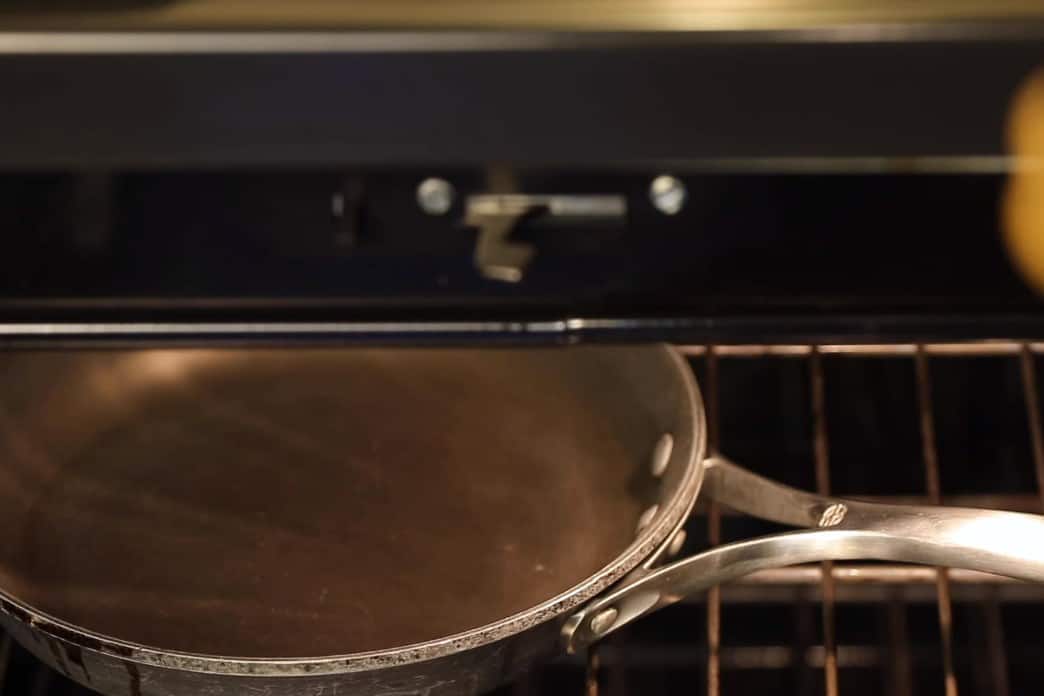
Pour one teaspoon of the desired oil into the pan to evenly cover its bottom. Preheat the oven to 300 to 350 F (149 – 177 C) and then put it inside for approximately one hour. That is enough time for polymerization to occur, which means the fatty acid changes during a chemical reaction.
To avoid damaging your non-stick pan, do not exceed the maximum temperature recommended by the manufacturer. Many pans can withstand temperatures up to 500 F (260 C), but always refer to the manufacturer’s instructions for guidance. Let the skillet cool for a while, take it out from the oven, and wipe excess oil with a paper towel.
Seasoning Pan on the Stovetop
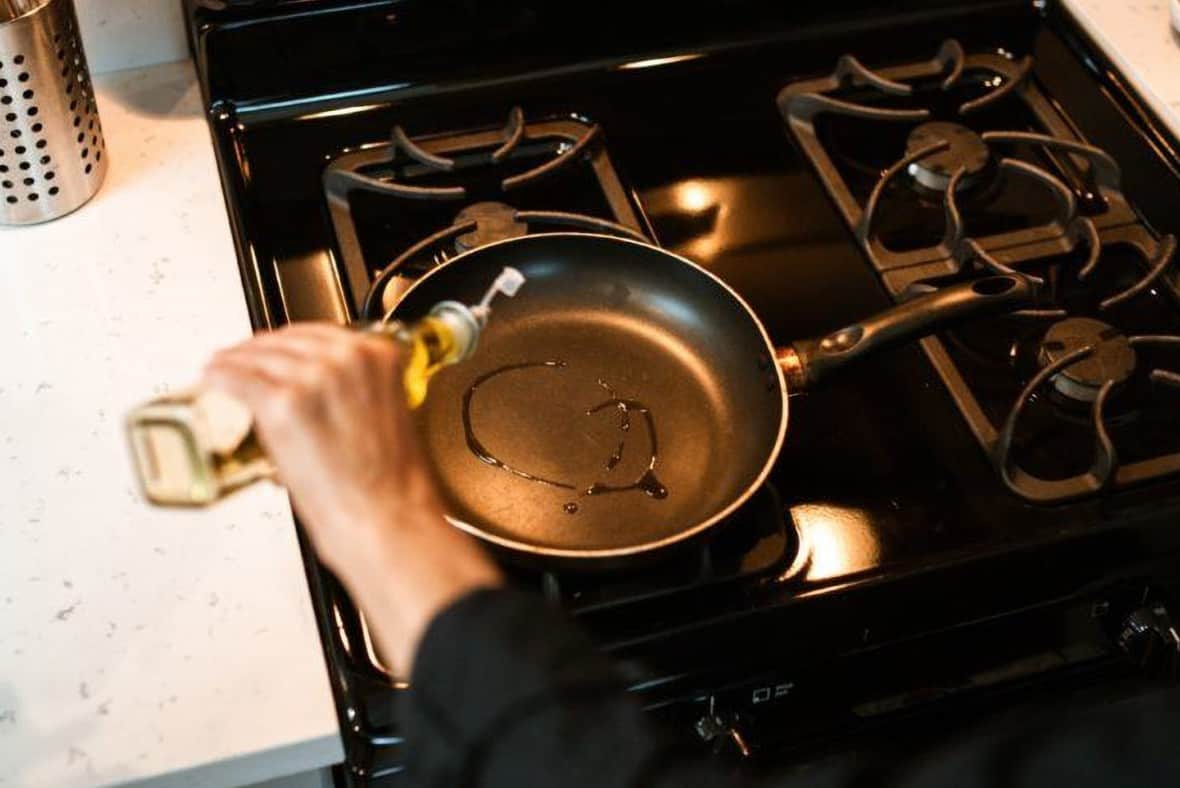
Start the process by applying one teaspoon of the desired oil to the pan surface. Spread it evenly on the bottom with a towel paper and place your cookware on the stove. Always use a thin coat of oil since adding too much of it will make your pan sticky.
Take care not to overheat the pan, so remove it as soon as applied oil starts smoking. The process usually takes about 30 to 60 seconds. Let it cool off and remove excess oil with a paper towel. Repeat the process to get a longer-lasting, slick, non-stick coating.
Spraying the Surface of the Pan
If you are a fan of quick solutions, you should try this effortless option. Apply a non-stick coating spray over the pan surface and let it dry for a couple of hours. Then, you can use your skillet as usual.
The Best Oil Options for Seasoning
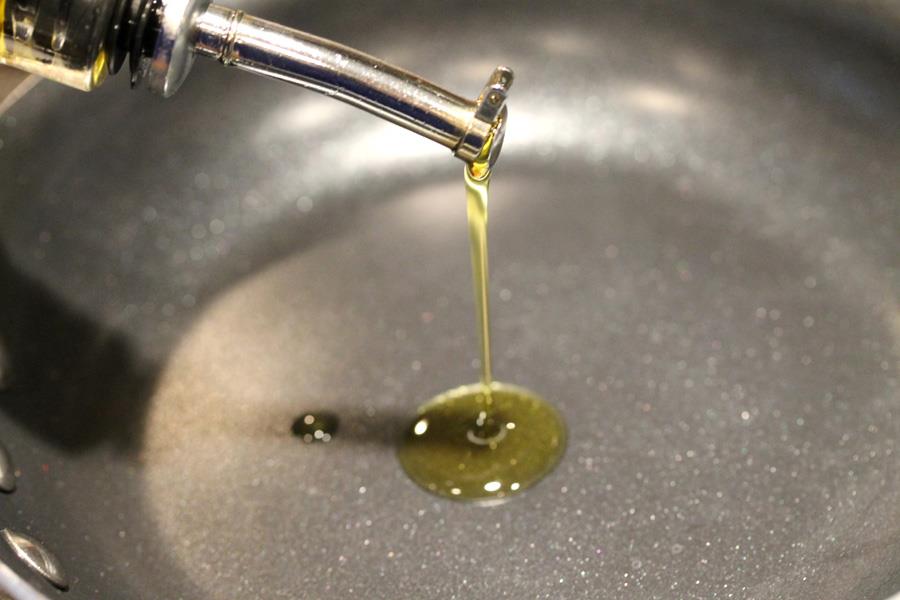
Remember that the type of oil you choose for seasoning your cookware will be crucial for the success of the procedure.
There is no precise rule concerning the type of oil you can use for seasoning your non-stick pan. However, it is better to pick out the one with adequate viscosity because it polymerizes quickly.
Also, you should choose the oil with a smoking point above 300 F (149 C). Otherwise, you can’t reach the desired result and get an adequate coating. The best options for this type of cookware are:
- Vegetable oil with a smoking point of 428 F (220 C)
- Coconut oil with a smoking point of 350 to 450 F (177 – 232 C)
- Peanut oil with a smoking point of 320 to 450 F (160 – 232 C)
However, you can also use some less popular oils, such as:
- Canola oil with a smoking point of 428 to 446 F (220 – 230 C)
- Grapeseed oil with a smoking point of 421 F (216 C)
- Avocado oil with a smoking point of 520 F (271 C)
- Soybean oil with a smoking point of 453 F (234 C)
- Corn oil with a smoking point of 446 to 460 F (230 – 238 C)
- Sesame oil with a smoking point of 350 to 450 F (177 – 232 C)
- Sunflower oil with a smoking point of 441 to 489 F (227 – 254 C)
Be careful with olive oil. Even though its smoking point of 320 to 470 F (160 – 243 C) is tolerable, most chefs avoid using it for this purpose. Moreover, some manufacturers don’t recommend this oil for seasoning their products.
The reason is its tendency to break down already at medium temperatures. Also, never use butter for seasoning the pan since it has a low smoke point. [What’s The Best Oil To Season Cast Iron Skillet?]
Regular Maintenance of a Non-Stick Pan
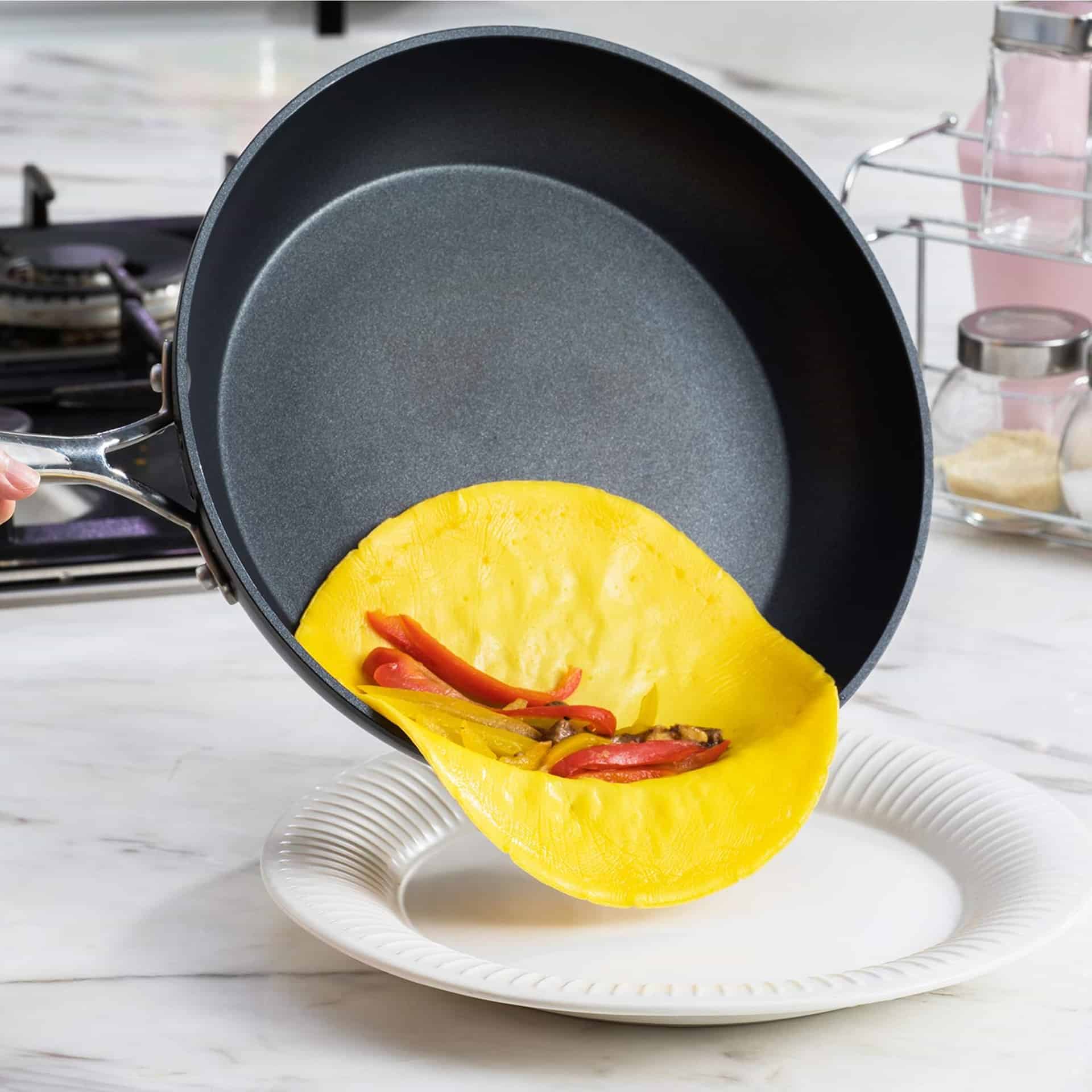
Taking care of your non-stick pan and keeping it clean will allow long-lasting use and prevent any food leftovers from sticking on its surface. There are some primary things you should follow to keep your cookware top-quality and ready for use.
Seasoning – Timely seasoning will protect both your pan from rusting and you from eating unhealthy meals.
Cooling – Always let the pan cool entirely before washing it. A quick change in the temperature level can damage the non-stick coat and cause the pan to wrap.
Washing – Always wash your pan by hand. Use soapy water, rinse the cookware thoroughly, and let it dry. Never use metal pads and harsh cleaners since they will scratch the surface. Also, don’t put your pan in the dishwasher since the high water temperature may damage it.
Storing – Before storing your non-stick pans appropriately, you should place paper towels between them to protect the surface from scratching.
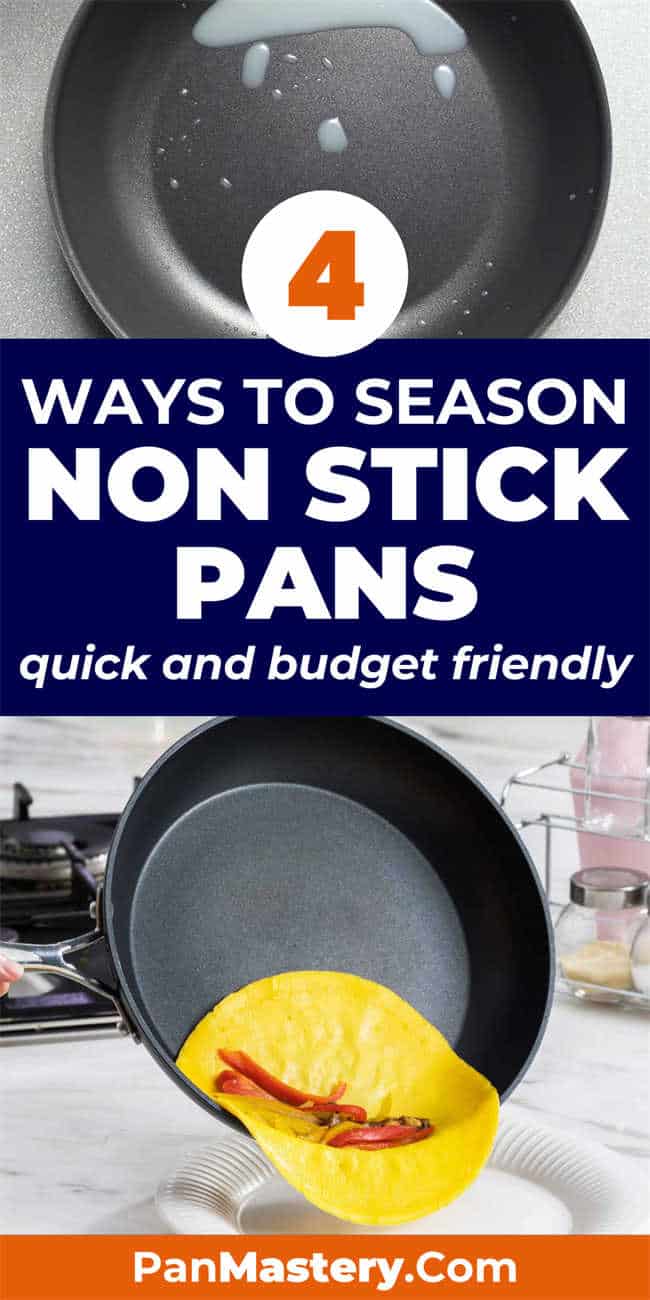

Michael Johnson is the founder of Pan Mastery, Inspired by his blacksmith grandfather’s legacy has a deep appreciation for hand-crafted pots and pans, he provides invaluable guides, reviews, and recipes to enhance your culinary journey.
